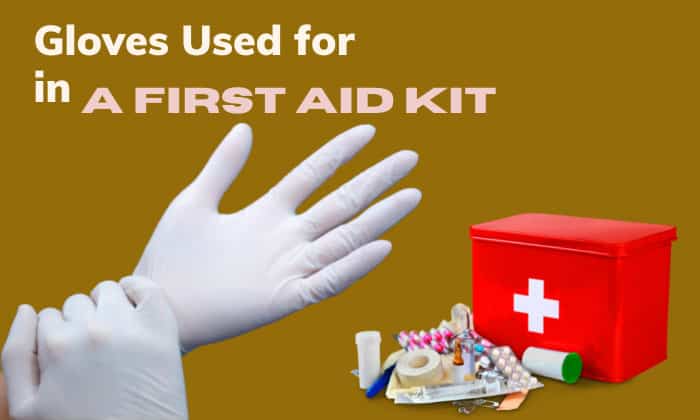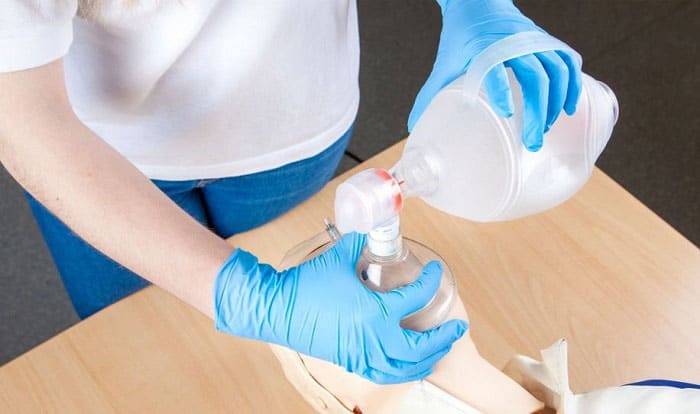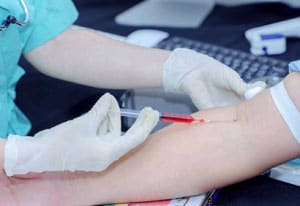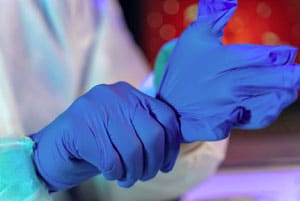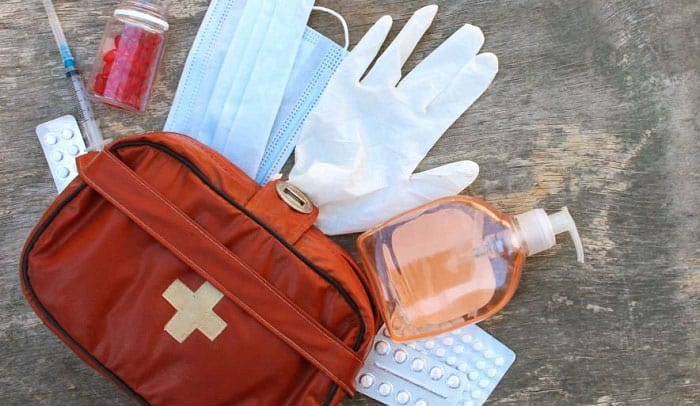Not all heroes have superpowers and wear capes; some have first aid kits and wear gloves.
Indeed, gloves are considered one of the essential items to have in your first aid kit. But do you know what are gloves used for in a first aid kit?
Well, think of gloves as the equivalent of a superhero’s special armored suit. They are worn to protect the wearer and the patient against potential cross-contamination and infection and to deliver emergency treatment efficiently and effectively.
Table of Contents
Types of Gloves
Despite the many uses of gloves in medical field, including first aid, only a limited number of gloves can be used and passed as first responder gloves. These gloves are called disposable medical-grade gloves.
To be classified as medical grade, gloves undergo high-standard testing to be approved by the United States Food and Drug Administration (USFDA). This way, the wearers are guaranteed their quality and effectiveness.
The most common medical-grade gloves used for first aid are latex, nitrile, and vinyl.
Glove #1: Nitrile
Nitrile gloves are the most recommended type of gloves to be used in first aid kits.
Made of synthetic rubber called nitrile butadiene rubber (NBR), nitrile has been long used as a substitute for latex gloves. It is more advisable for use during direct contact.
Aside from being latex-free, nitrile gloves offer the best protection among other medical-grade gloves. The barrier they offer is not limited to viruses and bacteria.
They also resist tears, punctures, chemicals, oils, and bodily fluids such as blood. Hence, they are gloves most apt in moderate to high-risk medical emergencies.
Although they are less stretchable than latex gloves, nitrile gloves still adhere to the shape of your hands and are comfortable.
Glove #2: Vinyl
Vinyl gloves are also another type of disposable medical-grade gloves used in first aid. They are made of polyvinyl chloride (PVC) and are an excellent alternative to latex gloves.
Due to their materials, they are less flexible, thus having a looser fit compared to nitrile and latex. This makes them easier to don and doff but makes them likely to slip off unwantedly.
Vinyl gloves also do not possess resistance against punctures, tears, as well as chemicals, and bodily fluids. Hence, they should only be used in low-risk medical emergencies and not in cases where contact with patients with external bodily fluids, such as blood, is necessary.
Glove #3: Latex Gloves
Compared to other disposable medical gloves, latex gloves offer the best protection against pathogens, especially bacteria and viruses.
They are also highly flexible, which contributes to dexterity. Anyone who wears them can feel more comfortable as it would feel as if they are not wearing any gloves.
Nevertheless, because of the increasing number of people having mild to life-threatening allergic reactions to latex, the use of latex gloves in the medical field is limited. There are also better options when dealing with chemicals, oils, and solvents.
Thus, including latex gloves in first aid gloves is only suitable in situations that call for high-level protection against viral infections.
Frequently Asked Questions
Do first aid kits have gloves?
Whether you are buying a premade or building your own first aid kit, a pair of gloves should never be missing.
Together with gauzes, bandages, tweezers, and scissors, gloves are also among the basic first aid box items. In fact, the American Red Cross cited gloves as a must-have item in a first aid kit.
Why is it important to have rubber gloves and a face shield in your first aid kit?
Rubber gloves and face shields are things in the first aid kit considered personal protective equipment (PPE) against infectious diseases. Wearing of PPE is part of Universal Precautions issued for healthcare providers and rescuers by the Centers for Disease Control and Prevention.
In particular, gloves are worn to avoid directly touching chemicals, blood, and bodily fluids. On the other hand, face shields protect first responders from bodily fluids when providing cardiopulmonary resuscitation (CPR) and mouth-to-mouth resuscitation.
Do first aid gloves need to be sterile?
The use of disposable sterile gloves in first aid kit is not always necessary.
For first aid and other general medical situations, non-sterile gloves are typically recommended. However, in emergencies where open wounds are involved, sterile gloves should be used.
Sterile gloves are called for when dealing with open wounds or surgeries. They protect the wounds from possible irritants and infections while ensuring that the wearers are safe bodily fluids.
What should I keep inside my first aid kit?
According to Red Cross, these items are what you should include in your family’s first aid kit:
- Compress Dressings
- Adhesive bandages
- Cloth tape
- Antibiotic ointments
- Antiseptic wipes
- Aspirin
- Emergency blanket
- Breathing barrier
- Instant cold compress
- Gloves
- Hydrocortisone ointment
- Roller bandage
- Sterile gauze pads
- Non-mercury, oral thermometer
- Triangular bandages
- Tweezers
- Guide for emergency first aid
You may include prescription or maintenance drugs if you have any.
Nevertheless, deciding which first aid kit items to have would depend on the emergency that you are anticipating. Customizing what goes inside your kit is highly encouraged to prevent unnecessary items.
Conclusion
One thing about first aid kits is that you never know when to use them. And when you do, it’s always because someone is hurt or injured. Hence, the purpose of every item that goes inside your kit is understood, including the gloves.
And now that you know what are gloves used for in a first aid kit, you probably begin to understand why it is important to wear gloves at all times when performing first aid.
Lastly, this is a reminder that to protect others, you must first protect yourself.

Veronica is our content editor. She is a talent in delivery. Her main work is editing and writing articles that are both informative and simple to follow. She is in charge of synthesizing our understanding of what personal protection equipment (PPE) is needed in each job, how to best apply it, and how to visualize that equipment.


